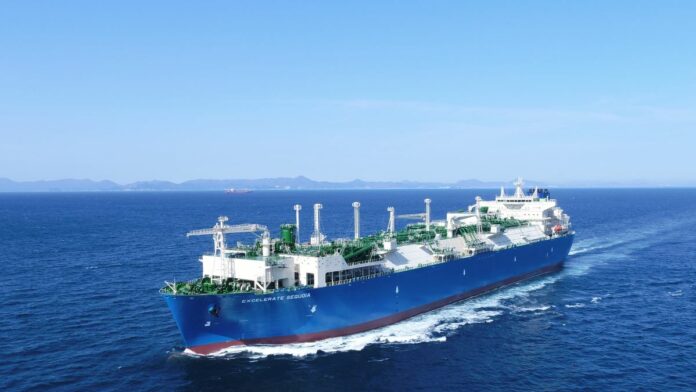Here is what happened. A stationary ship used by Engro to regassify and store LNG was due for maintenance, which was delayed by Covid-19. Because of the delay, the ship was given permission by international regulators to continue operating without maintenance for the time being. The delays kept happening until the ship’s class society stepped in and said the ship would no longer be allowed to function unless the scheduled maintenance took place by the 30th of June this year.
That is when all hell broke loose. Engro had no other choice but to tell the government that enough delays had happened and they needed to dock their ship. As a result, Sui Southern found itself in a position where they would be unable to provide gas for a couple of days, and as a result would have to pay liquidity to Sui Northern, with whom they have a contract to supply LNG. The energy ministry was sympathetic towards Engro, but the finance ministry was not so much. While these two factions locked horns over who should be paying Sui Northern liquidity, the maritime ministry raised issue with the ship Engro was temporarily bringing in since it was larger than the one they were docking.
In the past few days, the news has circulated widely in the media, but that has not meant things have always been clear. The above has been the simplest possible explanation of what has been happening. The details may seem a little more complex and daunting to understand because of the jargon involved. In reality, it is a case of turning what should have been a very simple, (and rather dull) routine, maintenance procedure into a bone of contention between at least three federal ministries, two government owned companies, and two important private companies.
Profit explains the ins and outs of how and why Engro Elengy’s dry docking has caused such a storm among the country’s top finance and energy Czars.
Some basics
The story starts with a vessel named Exquisite. Owned by a company called Excelerate, the Exquisite is no ordinary sea-farer in that it does not actually traverse the seas. It is an extraordinary and aptly named ship that is, in technical language, called a Floating Storage Regasification Unit (FSRU).
An FSRU is a special type of ship thta is a vital component required while transiting and transferring Liquefied Natural Gas (LNG) through the oceanic channels. An FRSU floats close to a coast and has pipes leading up to that coast which feed directly into the country’s gas pipelines. Ships carrying LNG carry them in a slushy form. Normally, these ships would have to be docked, the LNG offboarded, and taken off site to another place to be heated and liquified before it is ready to be transported through gas pipelines.
Instead, these ships do not go to the port and instead steer close to the FSRU, which stands stationary in the water, and basically just plug themselves into the FSRU. The FSRU is equipped with the facilities to conduct the heating and liquefaction process on the ship itself. The slush is thus transported from the travelling vessel to the FSRU, it is heated and then finally fed directly into the gas pipelines. This helps reduce costs, increase efficiency, and save valuable time. The only downside is that every five years or so, FSRU vessels need to be brought ashore, docked on dry land, and given maintenance. However, since it is years before this process is needed, it can very easily be planned for.
The vessel Exquisite, which is at the center of the current controversy, was the first FSRU to come to Pakistan. It started operating here in 2015, and its maintenance was due in 2020. Since 2015, it has been providing a significant chunk of gas to Sui Southern, which then contractually provides it to Sui Northern (Sui Southern and Sui Northern are both owned by the government but separate entities). In October 2019, Engro told the government that the ship needed to be dry docked, however, this could not be done because all ports and docks were shut down in wake of the Covid-19 pandemic.
This posed a major conundrum for both Engro and Excelerate – the company that owned the ship Exquisite. Ships all over the world are regulated by organizations known as ‘Class Societies’, which is short for ‘Ship Classification Society.’ They monitor different kinds of ships and make sure that they are being kept up to a certain international standard, and insurance companies rely on the judgement of these Class Societies to determine whether they can continue to provide coverage to ships. In the case of FSRU ships, they are monitored by The Class Society for Exquisite is Bureau Veritas (BV).
At this point Engro had done their job. They had notified the government of the need for dry docking and they had been following the directions of BV and the company that owns Exquisite. For the next year, they kept getting permission to delay the dry docking because of Covid-19. In March 2021, however, BV decided that enough time had passed. Shipyards were also functioning by now, so they made an executive decision that it was time the maintenance finally be carried out. If Engro failed to do this, the insurance cover on the Exquisite would be withdrawn or would be provided at a substantially higher premium.
The date they were given was the 30th of June 2021. Engro does not own Exquisite. Instead, it is owned by Excelerate. Therefore, Engro cannot make a decision regarding its dry docking. “Engro as an operator can only request to extend this period, and Engro did through its FSRU partner Excelerate. However, the decision is an executive order from BV,” said Engro officials.
Too many chefs
This resulted in a tussle in the federal cabinet over the status of the Exquisite. Neither the government nor Engro owns the Exquisite. This means that no matter what, it will go for dry docking on the 30th of June, and a meeting of the CCOE yesterday (Tuesday) indicated that the interruption in gas supply would most likely be approved between the 29th of June to the 5th of July. And that, somehow, is the best case scenario.
On the one hand are Tabish Gauhar and Hammad Azhar from the petroleum and power divisions. On the other hand are Shaukat Tarin, Azam Swati, and Ali Zaidi from the finance, railway, and maritime ministries. Gauhar and Azhar are sympathetic towards Engro and have an understanding of the dry docking requirements, but are facing backlash for “being lenient” towards EETL as per a report by Dawn. The other side believes they are favouring Engro. So how did we get here?
Immediately after Engro notified the stakeholders involved that the dry docking could no longer be delayed, the concern became what would happen to the supply of LNG. Since the maintenance was an expected occurrence, there was already a provision for this in the contract between Engro and Sui Southern. The maintenance process of an FSRU usually takes at least 2-6 months in which it is taken apart, cleaned, and put back together. During these months, Engro gets a new FSRU ship that fills in for the time that the original is gone. Engro had already made an agreement with Excelerate to bring in a new ship called Sequoia for the time being.
This resulted in two things. The first was that Sui Southern realised they would not have any gas for at least two days. The process of replacing an FSRU ship is not so simple as plugging one out and plugging the other one in. The Sequoia has already set out from Singapore and will reach Pakistan by June 26, 2021. It will then take at least two days for the new ship to be connected, and then at least three more days as the gas from the new ship gradually increases to normal levels. This means for the first two days there will be no gas supply at all, and that there will be less gas for the three days after that.
This spells trouble for Sui Southern (SSGC), which supplies gas to Sui Northern (SNGC). Due to the disruption in supply from the Engro, SSGC will face liquidity damages. As per one source, the liquidity damages can range between $1-1.5 million. It is said that SSGC is pushing for the dry docking to take place in August because there is already a scheduled shutdown for which SSGC will not have to pay liquidity damages for. Profit has reached out to SSGC for a comment but has not received a response at press time. Meanwhile, the cabinet faction of Shaukat Tarin and Azam Swati believe Engro should be covering the bill for Sui Southern, a sentiment echoed by the Chairman of the Cabinet Committee on Energy (CCOE), Asad Umar, who said that “Sui Southern should not have to pay liquidated damages for the fault of Engro.”
This is where Ali Haider Zaidi and the maritime ministry come in. While the maritime ministry has absolutely no involvement in any of this energy related business, it raised a concern saying they had not been told that a new ship was coming in. They made a particularly big fuss about this because the Sequoia is a larger ship than the Exquisite. Legally, Engro is not allowed to increase their capacity just because they have a larger ship, so it should not make much of a difference.
However, this has caused problems because of existing tensions over what Engro is supposed to supply to Sui Southern. The original agreement between EETL and SSGC was for the supply of 400 mmcfd. Later on, this was brought up to 600 mmcfd. While this resulted in a pending NAB enquiry, the fact that the Sequoia FSRU is 780 mmscfd, there are concerns by stakeholders over EETL expanding its capacity. This also proves to be a problem for the Ministry of Maritime Affairs considering the fact that if EETL Is enhancing its capacity through Sequoia it will hamper plans by Energas and Tabeer Energy’s plans to set up two new LNG terminals – and according to sources, Ali Haider Zaidi is sympathetic towards these two new companies that want to set up here. In any case, the government cannot get more than 600 mmcfd gas from the EETL even if EETL brings in an FSRU with capacity to regasify LNG of 900 mmcfd.
It must be remembered, however, that the Sequoia has been brought in on a temporary basis until the Exquisite is gone for dry docking. It is possible that EETL is mulling on keeping Sequoia permanently, considering its greater capacity and also the fact that it requires dry docking after a span of 15 years. However, for this Engro will need fresh government approval to increase their capacity, which is a completely different conversation.
What’s happening now?
The law Division, being headed by Farogh Naseem, came up with its opinion after receiving input from the legal teams of SSGC, EETPL, SNGPL, PSO, LNG, marine lawyers, and Excelerate. As per the inputs received, the law division has suggested dry docking to go on as planned resulting in the terminal being shut from June 29 to July 5.
To investigate the drama, the government has appointed Railway Minister Azam Swati to investigate the reasons behind the delay in the dry docking. Moreover, in order to deal with the impact of the dry docking, the Petroleum division has suggested RLNG/ gas curtailment measures based on priority. The measures aim to supply maximum RLNG to power plants as well as the export industry. While the RLNG supply to K Electric may be reduced, the gas saved from CNG and non-export industries may be diverted towards K Electric.
As per a story by Tribune, the oil and gas companies have informed the government that the entire exercise will cost consumers $25 million as they will be required to substitute gas with furnace oil and high speed diesel in power plants to supply electricity.


























There’s an easy solution to all of this. Ask Asad Umar what we should do and then do the opposite of that
An attempt at a sensible comment? Don’t bother.
There is no link of SSGC & SNGPL issues with this EETL maintenance problem spell, It is a separate issue.
1) I don’t see the issue of Mr Zaidi. If engro (or anyone) wants to increase their capacity and is not selling to the government then it’s is a commercial decision. Why would anyone care? Either they can sell the extra capacity (so the Pakistan population gets supply that it needs in a quick and timely manner over a new build terminal). Or they (Engro) take a loss by paying for capacity the market does not need, which is their own headache. Why is it an issue at all? 150 MMcFD of extra capacity does not make a new terminal with at least 600 MMcFD of capacity unviable. In fact this is just the rich investors accuse to extract more concessions for a “new” “floating” terminal. They are almost never new and floating means that there is no capacity built in Pakistan. But instead it is off shore and can be taken away at any point. For the record: Kenya refused to do this and built on shore storages.
You’re right. It’s apparent that this “dispute” is exacerbated by petty bureaucracy and point scoring. Some of the participants in this matter obviously have no clue of commercial matters.
Very well written and informative.
Engro should have planned alternate ship before instead of replacing ship in the last hour and causing disruption for 2 days. Ship from Singapore could have reached on or before 20th June . Maintanance is a separate topic and this is much related to Engro not making proper arrangements.
There can only be 1 ship docked at a time. Regardless of second ship coming early or even a month earlier. The first one has to go and only then a new one will dock and start pumping gas. Which will take 2 days.
There can only be 1 ship docked at a time. Regardless of second ship coming early or even a month earlier. The first one has to go and only then a new one will dock and start pumping gas. Which will take 2 days.
“In October 2019, Engro told the government that the ship needed to be dry-docked, however, this could not be done because all ports and docks were shut down in wake of the Covid-19 pandemic.”
Is it October 2019 or October 2020?
I don,t know way every process in this country is not going according to plan.Recent government is a pile of Garbage they have not been able to gain the trust of investor and so we are heavily relying on IMF and the IMF burden will be shared only by Middle class not Government.Recent Scenario is proof of that
Very much true, this government is not competent enough nor its senior bureaucracy to handle to routine decision making. I think enough time was giving to SNGL and SSGC to make the necessary changes for dry docking and they prolong the decision until it becomes an issue. Further, Engro is also responsible as they should have arranged the alternative solution before replacing it without causing disruption for 2 days.
Very informative. However any segment of the economy where the Government interferes gets in trouble.
This cause of delay in maintenance needs to be reviewed by concerned.
The LNG business in Pakistan has been made complicated to serve and protect the interest of selected few.
A quick forensic would definitely uncover hidden irregularities.
How can a nation of 220 million plus be so dependent on a small ship ?
What happens if war breaks out again ?
Where is the investment in storage ?
Let SSGC pay liquidity damages to SNGPL as per its onward contract instead of waiving it.
This issue reminds me of how government intervention in business (nationalization debacle of 70’s which severely damaged industry of Pakistan) destroys businesses and progress. Let them run without undue intervention of red tape and cancerous bureaucratic culture which destroys organizations.
Today, in the early morning, I saw a very dangerous dream of my life. Now, I need its interpretation (Tabeer).
Why a number of mew terminals are not commissioned
All the imran khan party is sleeping forb3 years.they
are making problems for common man instead they
inform us that this fault is from prevoius government
but they are unable to rectify the past mistakes
It not just a thought exercise. It takes a long time and planning.
Profit as usual has been a mouth piece of Engro and their version of the story. Problem become paramount with the fact that bureaucracy just doesn’t know how to deal with business and commercial matters. Unfortunately Pakistan and its people have to bear the brunt of Engro’s desires for extracting more money from their investment and they have the clout to make their problems; governments and make them pay for it.
Mismanagement is one of the basic reasons for so much of the disasters in Pakistan. Gillani Govt, was responsible for so many issues like CNG and buying expensive electricity. Now after 10 years the government is struggling to overcome the issues. As a results consumers have to buy expensive electricity and pay big amount of bills.